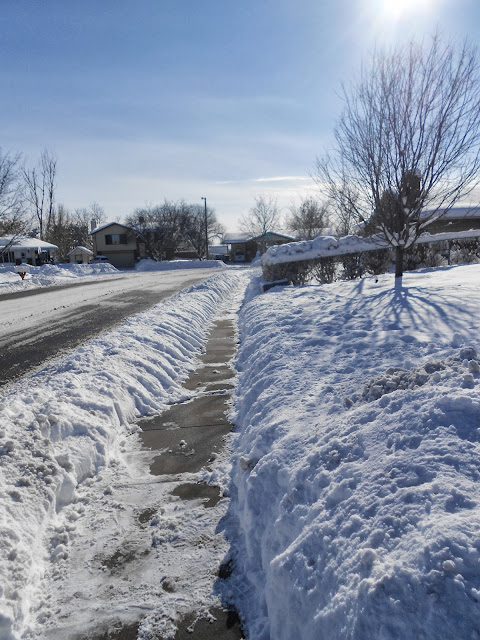Photos by Liz Arave Hafen
By Lynn Arave
They're by far the tallest mountain range in southwestern Utah, rising more than 12,000 feet above sea level. However, the Tushar Mountains remain relatively unknown.
''Under-appreciated and relatively uncrowded'' is how tourist officials describe these scenic, recreational gems, which are located east of Beaver -- about 210 miles south of Salt Lake City.
Some 30 miles long and up to 20 miles wide, the Tushars are part of the Fishlake National Forest.
Many Utah residents speed by to the west on I-15, and although the rugged shaped Belknap Peak may catch their eye briefly, most have no idea what mountain range they're looking at.
The light-colored Tushars are named after a Paiute Indian word, ''T-shar,'' meaning white. The range is believed to have been formed by intense volcanic activity below the ground that thrust upward some 5 million to 30 million years ago.
Access to the Tushars is easy. U-153, a scenic byway, is paved 19 miles up Beaver Canyon to Elk Meadows ski resort (elevation 10,000 feet). A dirt and gravel road continues another 21 miles to the east -- with some long and steep stretches. It connects with U.S. 89 at the town of Junction.
Another access road, although not paved, is Forest Service Road No. 126, out of Marysvale on the east side of the Tushars. It goes up Bullion Canyon about seven miles. More rugged roads and scenic backways also access the north side of the Tushars from I-70 and go to the old Kimberly mining area.
Kingpin of the Tushars is Delano Peak, 12,173 feet above sea level, a rounded summit that doesn't appear to be the tallest when looking at the range from I-15. As the highest peak in both Beaver and Piute counties, Delano is the 41st tallest named peak in Utah and the seventh highest outside the Uintas. The peak was named for Columbus Delano, U.S. secretary of the Interior in the 1870s.
Hiking to Delano Peak is a moderately strenuous, 13-mile round-trip trek that will require an average of six to seven hours. Since access roads go high into the mountains, it's just a 2,173-foot climb to the peak, probably making it the state's most easily accessed over-12,000-feet mountain. Regular hiking season is July to September.
The Wasatch Mountain Club ranks the Delano hike at a 7.7 in difficulty. In comparison, Ensign Peak holds a 1.5 rating, Bald Mountain in the Uintas is rated 3.3, Timpanogos Peak is rated 11, and Lone Peak in Salt Lake County is rated 14.8.
For pure scenic and pristine value, though, some hikers -- like Salt Lake's Winford ''Dub'' Bludworth -- prefer the Tushar's second-highest peak, the much more dramatic-looking Mount Belknap (it's 12,137 feet above sea level).
There are also some spectacular ATV trails through the Tushars. That's what attracted Bryan Burrell of Riverton to the area. He has a cabin on the east side of the mountains.
''This is a premier place for ATVs,'' he said. ''No one's disappointed who goes up there.''
Mountain bikers have also recently discovered the area, and intermediate to expert rides are available on the Kimberly road, the Big John Flat, the Puffer Lake Loop and the Skyline Trail.
Burrell is especially fond of the volcanic history of the area and also of Bullion Falls, an 80-foot water drop, named for the Bullion gold mine and town, where some 5,000 people once lived. There are also lots of colorful names in the Tushar Mountains: Horse Heaven, Grizzly Ridge, Robbers Roost, and Bellyache Canyon to name a few.
With a history of mining operations, mostly for gold and starting in 1888, names like Prospect, Gold Mountain, Grasshopper Mine, Deer Trail Mine, Glidder Mine, Sunday Mine and Copper Belt Peak also dot the mountainside of the Tushars.
There are six U.S. Forest Service recreation areas in the Tushars: Little Cottonwood, Ponderosa, Mahogany Cove, Kent's Lake, City Creek and Anderson-Meadow. There are also a few small bodies of water in the Tushars -- Puffer Lake, Kent's Lake, Blue Lake, LaBaron Lake and Willow Lake, plus a Boy Scout Camp.
Big Rock Candy Mountain, along U.S. 89, is a part of the northeast section of the Tushars.
Not without legends, talk of the Tushari, a mysterious, ancient Indian tribe was supposed to have inhabited the region. Also, Gorilla Ridge on the west slope of the Tushars and near Mount Baldy, was titled after a mine of the same name, and is believed by some to have Sasquatch sighting connections.
(-Written by Lynn Arave and originally published in the Deseret News.)
The Tushar Mountains as seen from I-15 to the west.
-NOTE: The author, Lynn Arave, is available to speak to groups, clubs, classes or other organizations about Utah history at no charge. He can be contacted by email at: lynnarave@comcast.net


















